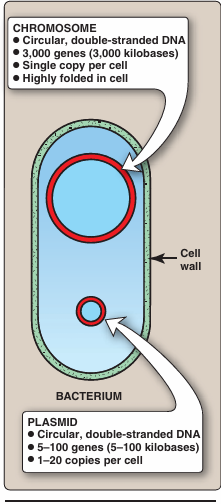

النبات

مواضيع عامة في علم النبات

الجذور - السيقان - الأوراق

النباتات الوعائية واللاوعائية

البذور (مغطاة البذور - عاريات البذور)

الطحالب

النباتات الطبية


الحيوان

مواضيع عامة في علم الحيوان

علم التشريح

التنوع الإحيائي

البايلوجيا الخلوية


الأحياء المجهرية

البكتيريا

الفطريات

الطفيليات

الفايروسات


علم الأمراض

الاورام

الامراض الوراثية

الامراض المناعية

الامراض المدارية

اضطرابات الدورة الدموية

مواضيع عامة في علم الامراض

الحشرات


التقانة الإحيائية

مواضيع عامة في التقانة الإحيائية


التقنية الحيوية المكروبية

التقنية الحيوية والميكروبات

الفعاليات الحيوية

وراثة الاحياء المجهرية

تصنيف الاحياء المجهرية

الاحياء المجهرية في الطبيعة

أيض الاجهاد

التقنية الحيوية والبيئة

التقنية الحيوية والطب

التقنية الحيوية والزراعة

التقنية الحيوية والصناعة

التقنية الحيوية والطاقة

البحار والطحالب الصغيرة

عزل البروتين

هندسة الجينات


التقنية الحياتية النانوية

مفاهيم التقنية الحيوية النانوية

التراكيب النانوية والمجاهر المستخدمة في رؤيتها

تصنيع وتخليق المواد النانوية

تطبيقات التقنية النانوية والحيوية النانوية

الرقائق والمتحسسات الحيوية

المصفوفات المجهرية وحاسوب الدنا

اللقاحات

البيئة والتلوث


علم الأجنة

اعضاء التكاثر وتشكل الاعراس

الاخصاب

التشطر

العصيبة وتشكل الجسيدات

تشكل اللواحق الجنينية

تكون المعيدة وظهور الطبقات الجنينية

مقدمة لعلم الاجنة


الأحياء الجزيئي

مواضيع عامة في الاحياء الجزيئي


علم وظائف الأعضاء


الغدد

مواضيع عامة في الغدد

الغدد الصم و هرموناتها

الجسم تحت السريري

الغدة النخامية

الغدة الكظرية

الغدة التناسلية

الغدة الدرقية والجار الدرقية

الغدة البنكرياسية

الغدة الصنوبرية

مواضيع عامة في علم وظائف الاعضاء

الخلية الحيوانية

الجهاز العصبي

أعضاء الحس

الجهاز العضلي

السوائل الجسمية

الجهاز الدوري والليمف

الجهاز التنفسي

الجهاز الهضمي

الجهاز البولي


المضادات الميكروبية

مواضيع عامة في المضادات الميكروبية

مضادات البكتيريا

مضادات الفطريات

مضادات الطفيليات

مضادات الفايروسات

علم الخلية

الوراثة

الأحياء العامة

المناعة

التحليلات المرضية

الكيمياء الحيوية

مواضيع متنوعة أخرى

الانزيمات
The Bacterial Genome
المؤلف:
Cornelissen, C. N., Harvey, R. A., & Fisher, B. D
المصدر:
Lippincott Illustrated Reviews Microbiology
الجزء والصفحة:
3rd edition , p59-60
2025-01-15
1019
The genome of an organism is defined as the totality of its genetic material. For bacteria, the genome often consists of a single chromo some that carries all of the essential genes and one or more varieties of plasmid that generally carry nonessential genes (Figure1).

Figure 1 The bacterial genome. [Note: Helical double-stranded DNA is shown as two concentric circles.]
A. The chromosome
All of the essential genes and many nonessential genes of the bacterium are generally carried on a single, long piece of circular, double-stranded DNA. This molecular structure is called the “chromosome” by analogy with the heredity-carriers of eukaryotic cells. Most bacteria have chromosomes that contain 2,000 to 4,000 genes.
B. Pathogenicity islands
Pathogenicity islands are discrete genetic elements that encode virulence factors, such as toxins, adhesins, secretion systems, and iron transport proteins. These islands, which range in size from 10 to 200 kB, can be horizontally transferred between bacteria, resulting in enhanced virulence and fitness in the recipient. [Note: Horizontal gene transfer is any process (such as transformation, transduction, or bacterial conjugation) in which an organism incorporates genetic material from another organism without being the progeny of that organism. By contrast, vertical transfer occurs when an organism receives genetic material from its ancestor, for example, a species from which it has evolved.] Pathogenicity islands differ from the rest of the chromosome in G+C content and are usually flanked in the recipient's chromosome by repeated sequence elements or genes that encode tRNAs.
C. Plasmids
Typically, bacteria contain small DNA circles (plasmids), which range in size from 1.5 kilobase (kb) pairs to 120 kb pairs (less than one tenth the size of the bacterial chromosome). Plasmids replicate independently of the chromosome and can exist in the cell as one copy or as many copies. Plasmids can carry genes that encode toxins or proteins that promote the transfer of the plasmid to other cells but usually do not include genes that are essential for cell growth or replication. Many plasmids contain mobile DNA sequences (transposons) that can move between plasmids and between plasmids and the chromosome . Transposons, the repository for many antibiotic resistance genes, are responsible for the ability of some plasmids to integrate into the chromosome
 الاكثر قراءة في وراثة الاحياء المجهرية
الاكثر قراءة في وراثة الاحياء المجهرية
 اخر الاخبار
اخر الاخبار
اخبار العتبة العباسية المقدسة

الآخبار الصحية















 قسم الشؤون الفكرية يصدر كتاباً يوثق تاريخ السدانة في العتبة العباسية المقدسة
قسم الشؤون الفكرية يصدر كتاباً يوثق تاريخ السدانة في العتبة العباسية المقدسة "المهمة".. إصدار قصصي يوثّق القصص الفائزة في مسابقة فتوى الدفاع المقدسة للقصة القصيرة
"المهمة".. إصدار قصصي يوثّق القصص الفائزة في مسابقة فتوى الدفاع المقدسة للقصة القصيرة (نوافذ).. إصدار أدبي يوثق القصص الفائزة في مسابقة الإمام العسكري (عليه السلام)
(نوافذ).. إصدار أدبي يوثق القصص الفائزة في مسابقة الإمام العسكري (عليه السلام)


















